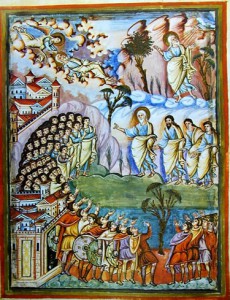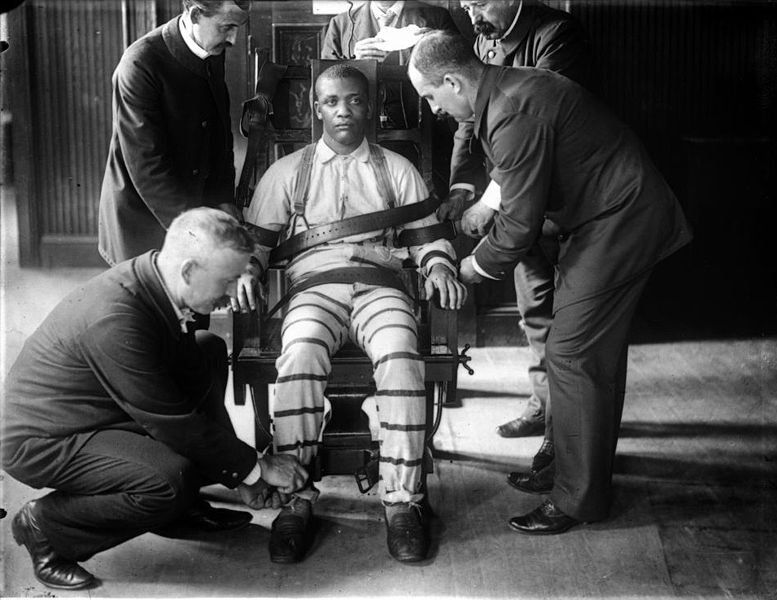 Of God and Gods: Egypt, Israel, and the Rise of Monotheism
Of God and Gods: Egypt, Israel, and the Rise of Monotheism
Jan Assmann
Madison: University of Wisconsin, 2008
Book Review
The study of ancient religions has never been more urgent. In the first decade of a century so far defined by a clash of civilizations, questions about monotheism and violence, truth and tolerance, conscience and coercion, religion and the state, cannot afford to remain academic.
And these concerns are never far from the surface of Jan Assmann’s latest book. “The times are over when religion could be viewed as the ‘opium of the people,’” he writes, recalling the Marxist critique of religion. “Nowadays, in the hands and minds of certain movements, religion appears as the ‘dynamite of the people.’”
Assmann picks up where he left off in his Moses the Egyptian: The Memory of Egypt in Western Monotheism (Harvard, 1998). Again he wants us to consider just how revolutionary it was for Israel to profess belief in one God.
The categories of philosophy have since impinged and distorted our understanding of this revolution. Originally, Israel’s belief in one God was not so much a statement about the “being” of God, or the exclusivity of God. Rather it was about the decisive difference of Israel’s God from all the rest.
We hear this “difference” in the first commandment given to Moses. Israel is to have no other gods besides the one who brought them out of the land of bondage (Exod. 20:2–3; Deut. 5:7; 6:14). Notice what this does not say. It does not say that there are no other gods in the world. It says instead that Israel cannot worship any of these other gods, though these gods are worshipped by the peoples around them.
What Assmann calls the “Mosaic distinction” is a distinction between true and false in religion. And it marked a transformation in human self-consciousness. For the first time, individuals were able to define their own identities, according to their own beliefs.
Biblical monotheism, he writes, made possible “a new form of normative identity based—not on birth, place, descent, citizenship, or other biological and/or political ties—but on adherence to a complex of laws, rules, and beliefs.”
The possibility of self-determination based on religious faith had radical political ramifications. Assmann stresses that the governments of the Ancient Near East functioned essentially as totalitarian theocracies.
The king was considered the agent of the gods; statecraft and sacrifice, politics and priesthood, were inseparable and indistinguishable. The gods and their worship provided the rationale and justification for state policies and practices. Religious violence, including ritual human sacrifice, was political violence and vice versa because there was no distinction between religious cult and the apparatus of the state.
Assmann is especially strong on the relationship between idolatry and political authority. “Idolatry primarily means the legitimization of the state in terms of divine representation,” he writes. “The state presents itself in its images, symbols, and ceremonies as a representative of the divine.”
Thus, when Israel claims that it must serve its God and not the Pharaoh’s gods, it is an assertion of religious liberty and at the same time a declaration of political liberation.
The command, “You shall have no other gods before me,” challenges the authority and legitimacy of every earthly kingdom because those “other gods” are the gods of empires and kingdoms. Israel’s monotheistic revolution, continued by Christianity, was a “critique and delegitimization of the political super powers of the ancient world: Egypt, Assyria, Babylonia, the Seleucid and, above all the Roman Empire,” he writes.
Assmann is right about the revolutionary implications of monotheism in Israel. Faith in Israel’s god relativizes every earthly power, makes it possible to separate religion and the state, and introduces the ideas of self-determination, political liberation, and freedom of conscience. Without being so explicit, he makes a good case for the Jewish roots of the Western political tradition.
What Assmann is really after is to provide an account of the relationship between biblical monotheism and violence, a subject of heated debate today in the academy. However here his analyses and answers become less convincing.
His interpretation of the biblical evidence is hampered by his methodological presuppositions about when and how the biblical texts were written. He presumes that the entire Hebrew canon—from the Pentateuch and historical books to the Psalter and the prophets—is the product of priests and scribes writing after Israel’s return from exile in the late sixth century.
He writes: “Covenant theology (and monotheism) developed after the fall, first of Samaria and then of Jerusalem; before, during, and after the Babylonian exile; following the complete failure and breakdown of the Kingdom; and after the loss of state and Temple—in short, after the most traumatic series of experiences that could possibly befall a society in those times.”
This historical reconstruction reduces the Bible and Israel’s religious system to a therapeutic and ideological response to national trauma. Needless to say, this is all highly speculative, empirically dubious, and leads to numerous contradictions and unasked questions as Assmann seeks to explain key texts.
Another problem is that Assmann appears to assume that the events recorded in the Old Testament never actually occurred. Moses is not a historical figure so much as he is an icon of Israelite self-understanding; even the story of the Maccabeean revolt “may be pure literature, pure memory, like other scenes of violence in the biblical narrative,” he says.
For Assmann the veracity and historicity of the biblical accounts is less important than the way these texts “testify to the self-representation of the new religion in its incipient stages.” In other words, it is does not matter if Israel really destroyed cities in Canaan leaving nothing alive, or if apostates and idolaters inside Israel were executed en masse. What matters is that Israel chose to remember its founding in this way, telling its national story, and the story of its monotheistic origins, in the “language of violence.”
Assmann also makes a decision not to engage directly with any of the biblical texts that depict Israel’s holy warfare against the peoples of Canaan. He justifies this move on two counts. First, he says there is no archeological evidence for the battles recorded in the Bible and that holy warfare injunctions in the Law (see Deut. 20:10–18) are “purely fictitious and utopian.” Second, he notes that these passages play no role in Jewish or Christian preaching or catechesis. “They are neither taught in a Jewish yeshiva nor preached from a Christian pulpit.”
Thus, Assmann effects what amounts to a “spiritualization” of these texts. He argues that biblical Canaan is best understood, not as a geographical or historical reality, but as “a symbolic representation of Israel’s own pagan past and persisting pagan or syncretistic traditions.”
Assmann believes it is more important to understand the internecine violence we find in the canon. He says there are some 600 passages that depict Israelites punishing their fellow Israelites for transgressions from the faith. He focuses on the golden calf and Baal Pe‘or affairs (Exod. 32; Num. 25; Deut. 13:7–10). He handles this material with the sensitivity it requires and brings out with chilling effect the implications of what it means to have “each man kill his brother … and each man his kin,” as Exodus describes it.
Assmann identifies in Israel a deep resolve “to exterminate the pagan within,” by violently rooting out apostates, backsliders, and idolaters . He concludes that under Israelite monotheism violence is mainly directed inward, against believers who fall away from the true religion: “As far as its biblical self-portrait is concerned, monotheism is a religion with propensities toward internal rather than external violence.”
This becomes the basis of Assmann’s larger arguments about religion and violence in the world today. In answer to monotheism’s discontents in the academy, he argues that monotheism is not “inherently or structurally violent and intolerant.”
Monotheists, he contends, turn violent only when they decide that the truth of their God means they should persecute “untruth” and eradicate or suppress other gods. This is a reasonable conclusion, but it comes across as tendentious and pre-determined given his prior decision to bracket every text that depicts Israel’s religious warfare against external enemies.
The problem is that Assmann’s post-modern divorce of the “text” from its historical context and his clinging to old-school form-critical hypotheses, make it impossible to do justice to the unique self-understanding we find in Israel’s Bible.
In effect, he ends up treating the biblical texts as if they were Egyptian mythology or some other specimen of Ancient Near Eastern folklore. While there is much to be learned from the history of religions, there is something radically different about the Bible that cannot be reckoned solely by a comparative religions approach.
Unlike the other gods of the Ancient Near East, the God of Moses was not content to claim primacy in a heavenly pantheon. And the Israelites who worshipped this God did not see themselves as just any people. The God proclaimed by Moses was believed to be the Creator and Lord of history, and the people were said to be his “firstborn” and “chosen” among all the nations (Exod. 4:22; 19:5–6). This self-understanding sets Israel apart from all its neighbors and predecessors in world religions.

Assmann recognizes this. But he does not seem to know what to do with it. He acknowledges that the Bible is a text unlike any other in that it does not record stories about the gods (historia divina) but stories about the one God and his work in history (historia sacra). What he nicely describes as the “sanctification of history,” in Scripture means that history becomes the sphere of divine activity and the working out of the divine intention. But it also means that we cannot read Scripture apart from history. It is odd and self-defeating, then, that Assmann does just that.
To prescind from the difficult questions of historicity or to “spiritualize” or “psychologize” the biblical texts, is a scholarly dodge that undercuts his own good intentions. Without a solid grounding in the biblical data, his assertions can only sound like the well-meaning opinion of a concerned party.
A better way to proceed is to appreciate the biblical texts on their own terms. For this a canonical reading provides far greater explanatory power.
Reading canonically we notice a cosmic universalism in Israelite monotheism that is found nowhere else in ancient literature. What other people composed genealogies that included not just their own warriors and kings, but the origins of every tribe and nation on earth? What other people composed liturgical prayers and prophecies that envision the entire cosmos—everything in heaven and earth—giving praise to its Creator?
Reading canonically, we can also trace a distinct movement—from the exigencies of holy warfare to the vocation of holy martyrdom and suffering servanthood; from a theology of conquest to a theology of exile. From an earthly kingdom to a liturgical empire. Israel’s evolving sense of vocation is reflected in its liturgy and sacrifice, with movement again discernable from the bloody offerings of animals to the unbloody “sacrifice of praise,” prayer, and self-offering.
The search for a true understanding of the place of violence in biblical monotheism lies in these movements and tendencies in the canon, which find their fullest expression in the teaching of Jesus Christ and the practice of the New Testament Church.
Previously unpublished.
© David Scott, 2009. All rights reserved.


